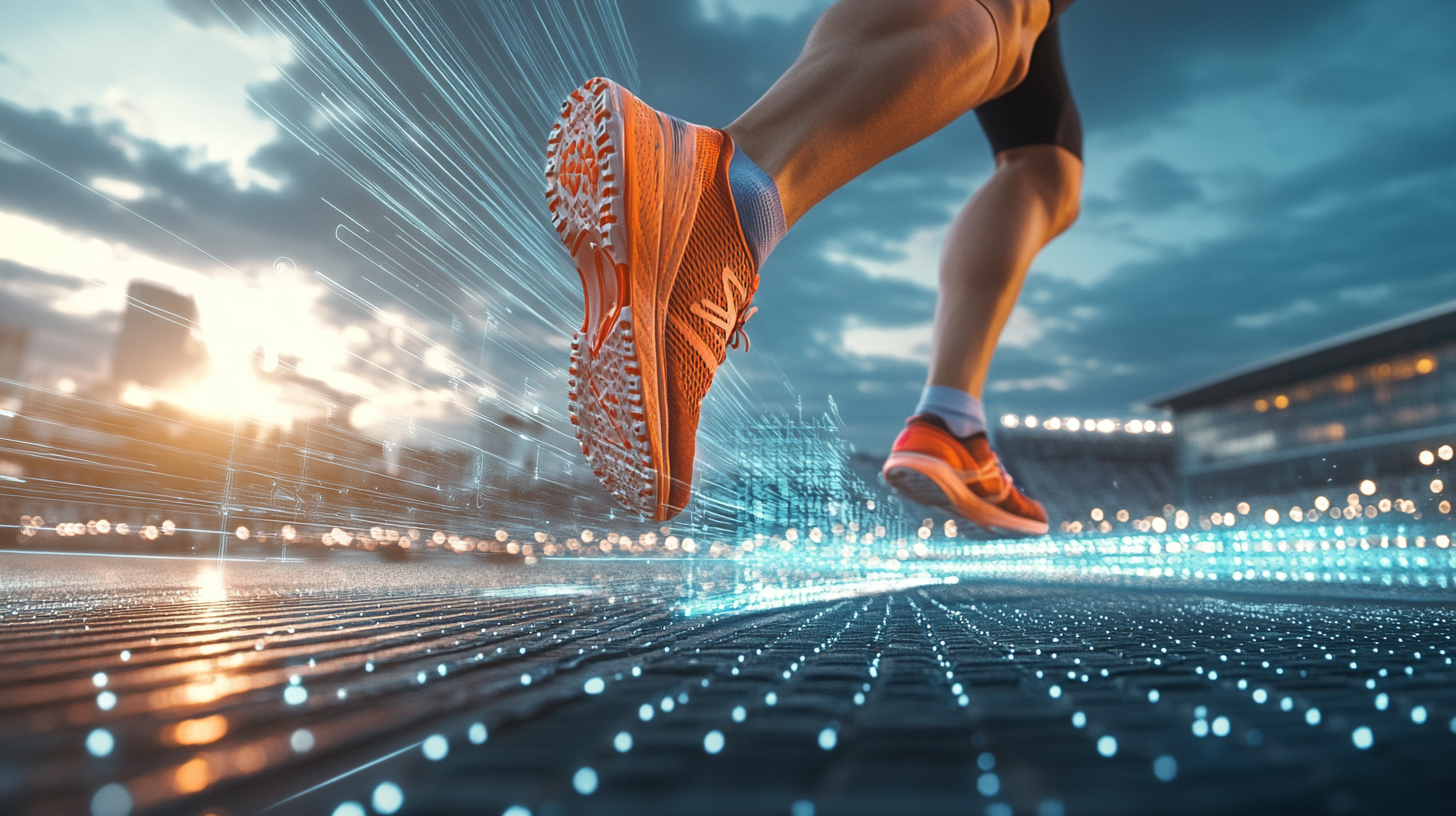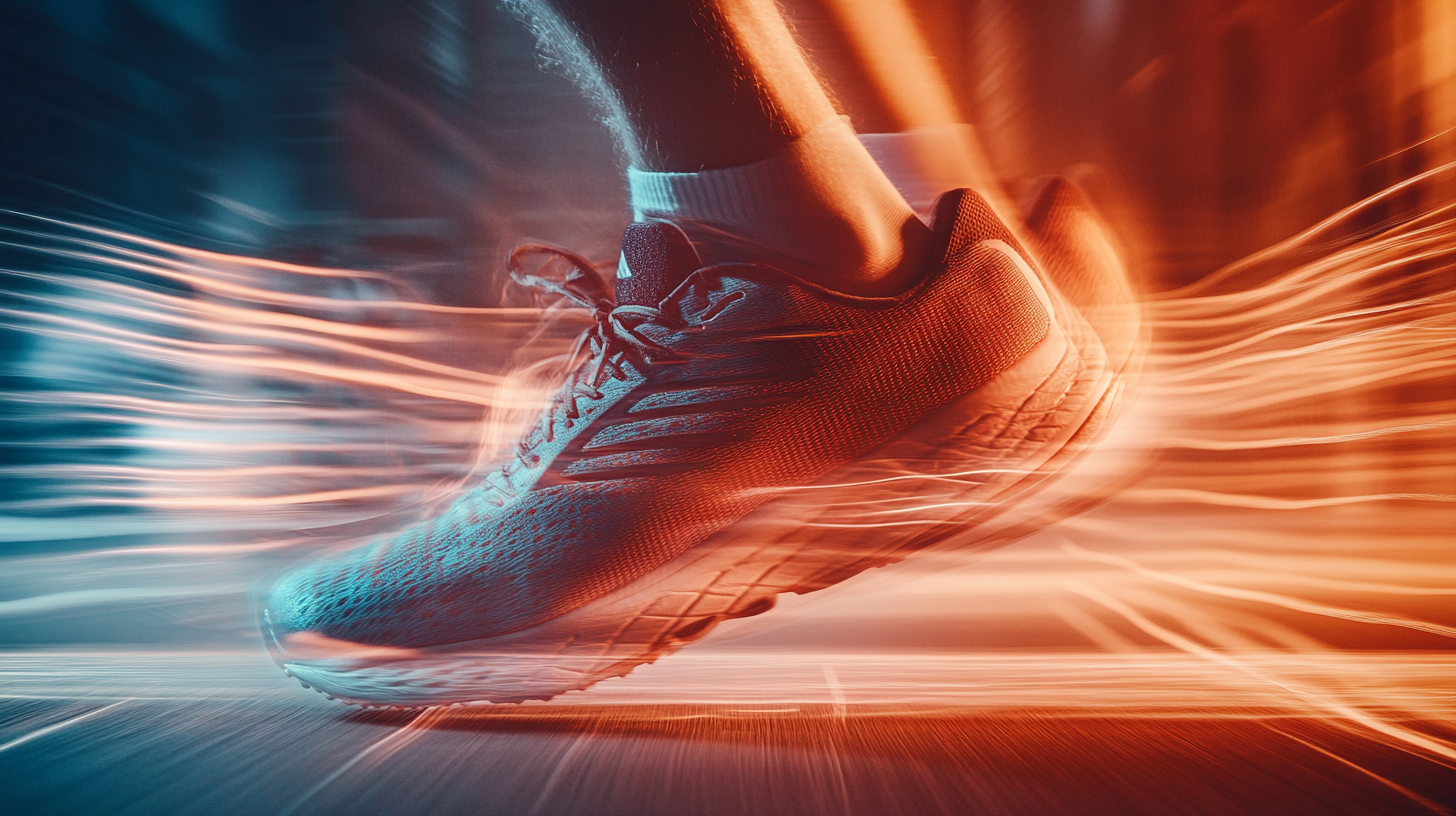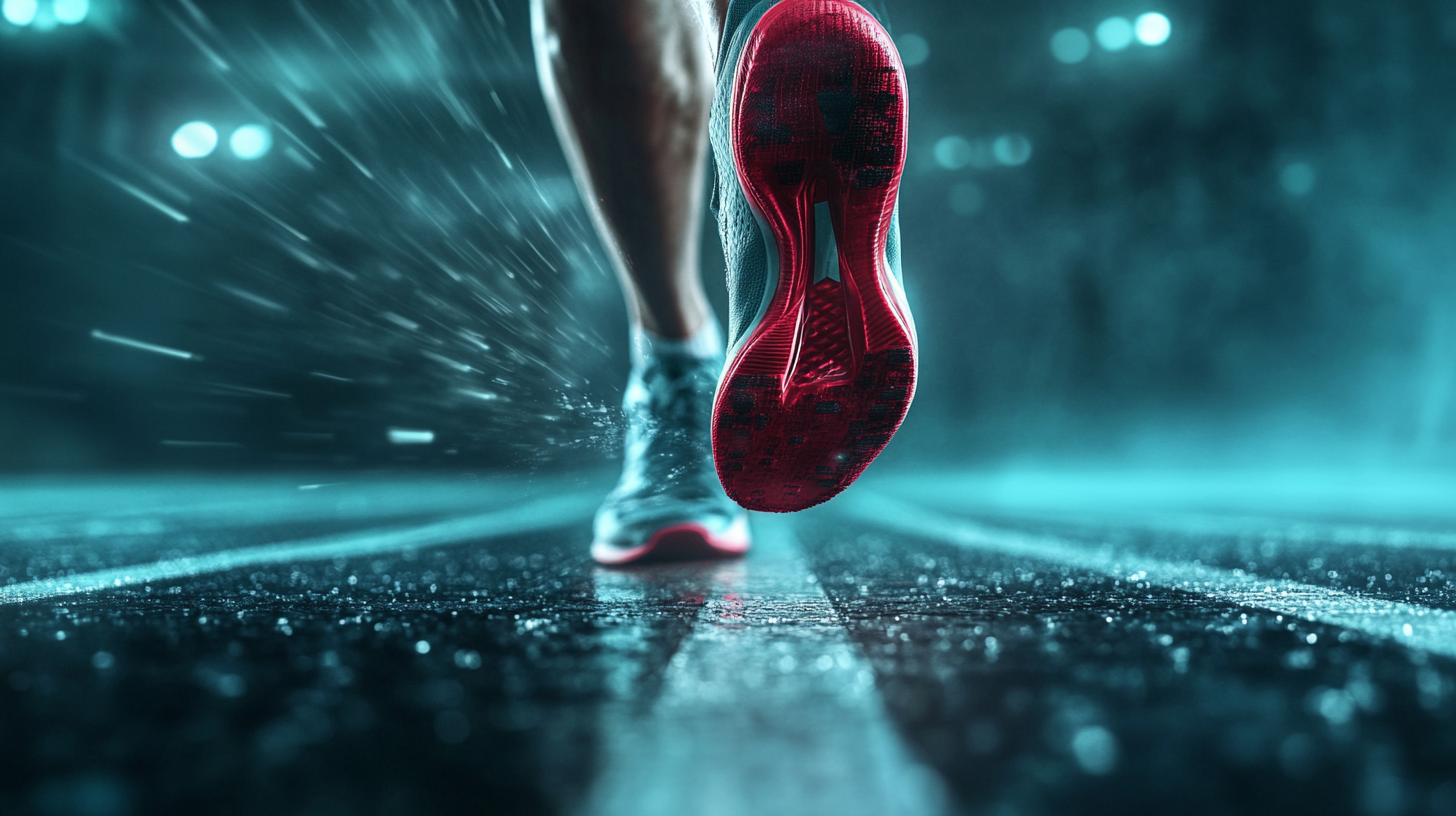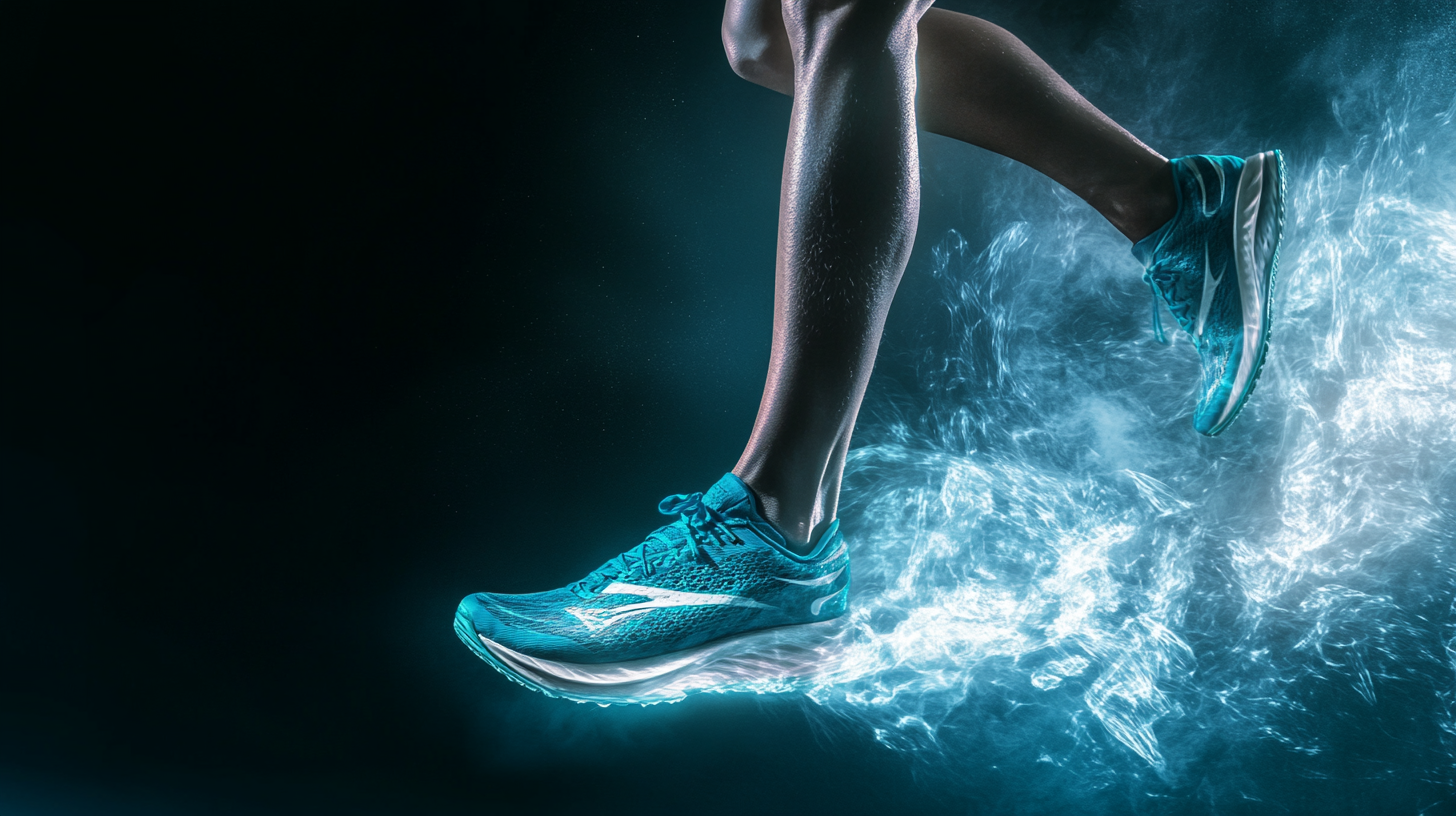
Undoubtedly, running shoe evolution of the recent past has played a significant role in professional sports extending the limits of performance and athlete potential. According to a publication of the Sports Analytics Institute, advances in footwear technology contributed to the overall improvement of marathon times by 3-5 percent on an average in the last decade. Such improvements in running performance are a consequence of innovations that include lightweight materials, advanced-cushioning systems, and personalized designs to enhance energy return and lessen injury risk. As athletes have come to define excellence, running shoes have transcended being simply a necessity and are now regarded as an integral training tool.
Additionally, a study conducted by the National Athletic Footwear Association revealed that 70% of elite athletes believe that specialized running shoes are vital to their performance improvements. Such insight strengthens the consideration for selecting the appropriate shoe based on each particular individual's running style and conditions. It is apparent from this brief discussion of the innovative ways running shoes have been utilized in the professional arena that these advances are not only trends but have become significant instruments in improving sports performance.

It is an acknowledged fact that the evolution of running shoe technology has affected elite competitions by changing the dynamics of athlete training and performance. Earlier, running shoes were considered simply a means of comfort and protection; now, with advancements in materials and engineering, they have become a different breed altogether. The first running shoes incorporated some or all of the newest technologies, such as lightweight materials, integrated cushioning systems, or responsive foams with enhanced energy return, which are all key to deliver peak performance. Among the new design attributes, carbon-fiber plates inducing propulsion and stability during the race have taken the biggest stage. This has been followed by the widespread media glare after exceptional runs by elite athletes in these specialized shoes. With a shoe design combining advanced analytics and biomechanical considerations, the first-time entry of a countercredit in regards to manufacturers producing according to the unique needs of an athlete allows for an opportunity for speed against injury prevention الذي لم يكن متوفرًا. In addition, the competitive world has seen the birth of digital technologies, including sensors embedded into footwear for performance data acquisition. The shoe application thus acts as a real-time analysis for the athlete while helping the coach improve training regimens with insights into biomechanics and running efficiency. As the technology behind running shoes continues to advance, there will be a continuous breach of limits and possibilities in the realm of professional sports, making it ripe for these shoe-wearing athletes and, in the process, shatter couple records and redefine excellence in their sports.

The development of lightweight and responsive materials has changed the face of professional athletics, and running shoes have benefited most from this evolution in technology. An 11% growth of demand for high-performance running shoes in the past year, as reported by the Sports and Fitness Industry Association, shows just how much athletes are depending on innovations for enhancements in their performances. Advanced synthetic polymers, such as EVA and TPU, allow for drastic reductions in weight without sacrificing strength. This change helps runners to stay faster with lesser fatigue on their muscles and joints during prolonged periods of exertion.
The University of Massachusetts reported that running in lightweight shoes could yield up to 1.1% changes in efficiency, which is a massive time gain during competitive events. In addition, responsive materials with good energy return improve stride efficiency and allow athletes to save energy in long-distance events. Athletes report more comfort in these high-tech shoes, resulting in fewer injuries and better performance overall.
As companies continue pouring considerable resources into research and development, we are witnessing the emergence of the carbon-fiber plate or the adaptive fit system that has revolutionized the running experience. Shoe R&D works in conjunction with our performance training for a 2022_Journal of Sports Sciences study suggesting that perhaps in the region of 2-3% sprint-time enhancement can be expected from the technologies forming that shoe-with-in-week build-up, producing an obvious edge in such competitive occasions. Therefore, lightweight plus responsive materials are not merely trends; they are at the heart of redefinition in athletic performance possibilities.

Running shoes are undergoing a substantial transformation in the field of professional athletics. With injury prevention constituting the prime consideration on the mind of an athlete, running shoe designs are evolving into those that comprise advanced technologies that enhance performance on the track but have all features relating to safety. Recent studies confirm that about 50% of runners sustain injuries every year; thus, it is now time for a paradigm shift in the design of footwear.
One of the most promising advancements in shoe technology includes the development of cushioning systems applicable to any runner's unique gait and impact forces. In a study conducted by the Journal of Sports Sciences, the study holds that the response mechanism can reduce ground reaction forces up to 20% using shoes with proper cushioning, thereby significantly reducing the risk of stress fractures or other injuries associated with impact. Lightweight materials coupled with engineered mesh uppers allow for increased breathability and flexibility, reducing the effect of blistering and discomfort during long-distance runs.
In addition, the advancement of running shoes now pragmatically embraces a biomechanical analysis. The finest of brands now use motion capture technology to study the movement of their athletes at the very instant their foot strikes the ground. Published in the American Journal of Sports Medicine, shoes designed with purposely tailored supportive structures can help reduce pronation-related injuries by 30%. This essentially means that the approach to shoe creation can go beyond just performance to also focus on athletes' careers by minimizing their time lost to debilitating injuries.

Biomechanics is really important in developing custom footwear solutions for professional athletes. The more an athlete pushes the body's limit, naturally the larger the requirement on their feet increases. Traditional running shoes would not support this unusual general population; biomechanics comes into play by using science to help the understanding of these unique movements and stresses an athlete may experience. Not to mention, providing a closer understanding of gait types, foot arch types, and pressure distribution among other things can lead to manufacturing footwear that gives performance enhancement with beauty of injury prevention.
Fantastic advances through biomechanical research have invented special running shoes made for individual needs of the athlete. Such individuals specificities as running style, surface preference, or injury experience define the kind of custom solution made available. Beyond that, this becomes even more beneficial in terms of recovery while it's on adjustment ground concerning comfort and performance. For example, with scientifically advanced cushioning technologies, the shoes can effectively absorb shocks, thus lessening impacts on the joints while exercising at high intensity. Also, it optimizes the materials which give maximum breathability and support, maintaining good foot health over time and carrying out good performance in competitive environments.
However, it is thought that with the progress of sports science, biomechanical smart shoes will also take up to further newer invention. The emerging general trend is that every athlete, in fact every level of the competition, is beginning to realize the need for a personalized shoe solution within their training routine. The innovation in shoes engineered according to the requirements of the athlete's biomechanics will now take such an athlete to a new level of performance while protecting their body from injuries. In fact, this scenario lends emphasis on how essential biomechanical engineering is in the offing for the future of professional athletics, where every step matters.
Recent technological advances in the running shoe has impacted professional athletes significantly in terms of performance-making history and controversies among sports lovers. Some of these new improvements include the use of advanced materials, such as carbon-fiber plates, and lightweight foams that add energy return and improve efficiency for the runners. An example case study is that of Kipchoge's historic marathon event of less than two hours: the fitting in which the engineer designed his shoes to be possibly in speed action without putting unnecessary fatigue contribution to the athlete.
Another illustration can be given within the Tokyo 2020 Olympics, in which several athletes appeared in futuristic shoes having advanced traction and cushioning systems. The sudden drop in sprint times was displayed among rivals by such footwear. Various sprinters and long-distance runners would speak of feelings of lower energy expended, so that ultimately they may push their own limits further than they ever sensed possible. Such examples demonstrate the extent to which running shoes keep them from being mere instruments. Rather, they prove to be very essential components of redefining performance's ultimate limits for the human athlete.
As with all new technologies, sport and technology have again produced a symptom of the race between ideas about equity and the spirit of competition. Leaping is part of human progress, according to some, perhaps avoiding tedious events in cheaters' shoes or shoes that never allow their wearers to leap as far. However, it is undeniable that new developments continue to be changing competitive running at both the elite and popular levels, as excitingly higher stakes are achieved in the performance of professional athletes.
